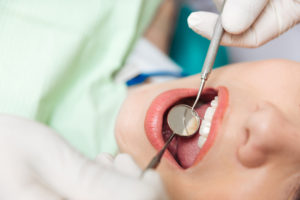A dental onlay is a type of tooth restoration that is used to fill a large area of decay on the top of the tooth. While a dental inlay is molded to fit inside a cavity, an onlay is affixed to the top of the tooth. Unlike an inlay, an onlay can be used for teeth that have experienced decay or damage on the cusps of the tooth. Both inlays and onlays are more substantial than a filling, but are less instrusive than a crown. Dental onlays fit over the biting surface of the tooth and are made of a solid piece of composite, gold, porcelain, or resin.
Your dentist may recommend placement of a dental onlay in certain situations, such as when you have sustained damage to the cusp of a tooth, and a filling or inlay can’t be used. An onlay may be required if you have a cavity in a tooth with a weak structure, which could crack if a regular filling is used to restore the tooth. Onlays may also be used if your dentist determines that much of the tooth structure can be preserved, and restoration does not require the aggressive approach used for a crown.
What to expect from the dental onlay process:
- Your dentist will numb the area around the affected tooth using a local anesthetic. Once the area is numb, the damaged or decayed portion of the tooth will removed to prepare your tooth for the onlay.
- After this, an impression of your tooth will taken and sent to a dental lab for the creation of the permanent restoration. Your dentist will place a temporary crown to protect the tooth until your next appointment.
- When your permanent onlay is ready, your dentist will remove the temporary onlay. The permanent restoration will be fitted onto the tooth to ensure that it is a good fit. Then, your dentist will permanently bond the onlay to your tooth. The onlay is then polished and prepared so it matches the appearance of your natural teeth.
















